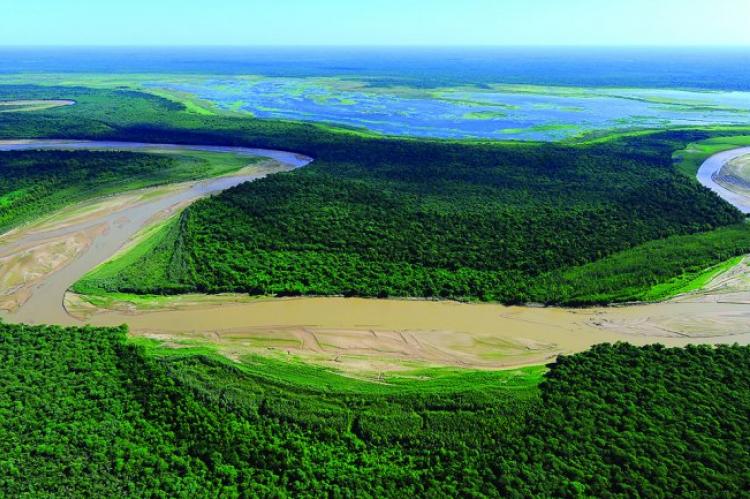El Impenetrable: Where Nature's Wonders Thrive in Argentina's Gran Chaco
El Impenetrable National Park is situated in the Gran Chaco region in northern Argentina. The park is a tribute to the area's rich biodiversity, stunning landscapes, and conservation initiatives. It gets its name from the dense forests and scarce waterways that define the Impenetrable Region.
El Impenetrable: Where Nature's Wonders Thrive in Argentina's Gran Chaco
Nestled within the heart of the Gran Chaco region in northern Argentina's Chaco Province, El Impenetrable National Park is a testament to the region's biodiversity, unique landscapes, and conservation efforts. Spanning approximately 128,900 hectares (318,000 acres), this national park, established in 2014, encapsulates the essence of the "Impenetrable Region," earning its name from the dense woodlands and limited waterways that characterize the area.
Historical Context
El Impenetrable National Park's roots lie in transforming the Estancia La Fidelidad, a former ranch. The vision for the park materialized in 2011 following the passing of the last ranch owner. Environmental organizations and the National Parks Administration collaborated to propose the creation of a national park, culminating in the necessary administrative and legislative actions taken by the province of Chaco. Opened to visitors in 2017, El Impenetrable is the largest national park in northern Argentina, showcasing the region's natural wonders and rich cultural heritage.
Unique Environments
At the core of El Impenetrable's ecological significance lies its diverse environments, each contributing to the park's rich biodiversity. Upland woodlands of quebrachos, groups of locust trees, riparian forests along the Teuco River, palm forests, cardón cacti forests, grasslands, and one of the last wetlands in the region collectively shape the park's distinctive ecological tapestry.
The Teuco River, characterized by regular flooding and year-round flow, is pivotal in shaping natural communities and sustaining wildlife populations, particularly during the dry season. This lifeline contributes to the park's status as a haven for numerous endemic species, both flora and fauna, found only in this region.
Biodiversity Hotspot
El Impenetrable National Park is a biodiversity hotspot, serving as a sanctuary for a remarkable array of unique species that call the Gran Chaco region home. Among the endemic species that find refuge within the park's boundaries are the pichiciego, Piche islero, Chacoan mara, Chacoan peccary, Quebracho crested tinamou, and the Argentine lignum vitae tree. These species, found nowhere else on Earth, highlight the significance of the park's conservation efforts in preserving the genetic diversity of the Gran Chaco.
The park is a vital habitat for many iconic large mammals, including the elusive puma, maned wolf, giant armadillo, tapir, and the remarkable giant anteater. Additionally, three species of peccaries, the collared, white-lipped, and chacoan peccaries, thrive within its borders, contributing to El Impenetrable's reputation as a refuge for South America's diverse wildlife.
Avian Paradise
El Impenetrable's native forests are a haven for hundreds of bird species, creating a symphony of birdlife within its boundaries. Crowned eagles, the majestic jabirus, blue-fronted amazons, black-bodied woodpeckers, Chaco chachalacas, skimmers, and the vibrant rufous-fronted thornbirds are just a few of the avian residents that call this park home. Birdwatchers and nature enthusiasts alike are drawn to this avian paradise, where these feathered inhabitants' melodic calls and vibrant plumage of these feathered inhabitants add to the park's enchanting allure.
Diverse Flora
The vegetation of El Impenetrable is equally diverse, featuring a rich tapestry of plant life adapted to the harsh conditions of the Gran Chaco. Quebracho santiagueño, white quebracho, locust trees, Schinus molle, guaiacum, Sideroxylon obtusifolium or guaraniná, yuchan, Pisonia ambigua or zapallo caspi, mistol, vinal, Prosopis kuntzei or itín, porotillo, and garabato are just a few of the species that thrive within the park's boundaries.
Notably, El Impenetrable hosts a substantial area of Bulnesia sarmientoi forest, an endemic species of the dry Chaco biome renowned for the quality of its wood. This unique forest ecosystem serves as a testament to the park's commitment to preserving the region's natural heritage and ensuring the survival of its iconic plant species.
Conservation Efforts and Sustainable Tourism
El Impenetrable National Park stands as a living testament to the ecological diversity and cultural significance of the Gran Chaco. Its creation and ongoing conservation efforts underscore the commitment to preserving this unique landscape for current and future generations, offering a window into the untamed wilderness of northern Argentina.
The park's management emphasizes sustainable tourism practices, ensuring that visitors can experience the natural wonders of El Impenetrable while minimizing their environmental impact. Guided tours, educational programs, and eco-friendly accommodations provide opportunities for responsible exploration and appreciation of this remarkable ecosystem.
Through collaborative efforts with local communities, conservation organizations, and regional authorities, El Impenetrable National Park aims to balance protecting its invaluable natural resources and promoting sustainable economic development.
Conclusion
El Impenetrable National Park is a true gem of the Gran Chaco, offering a unique opportunity to immerse oneself in the region's diverse landscapes, rich biodiversity, and cultural heritage. As visitors explore its trails, encounter its iconic wildlife, and marvel at its vibrant flora, they are reminded of preserving these natural wonders for future generations. This national park serves as a beacon of hope for the conservation of the Gran Chaco and a testament to Argentina's commitment to safeguarding its natural treasures.
